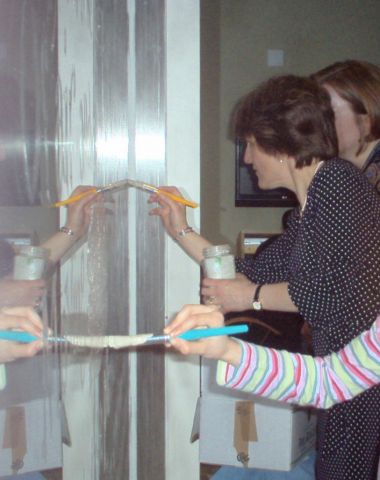Once I’d got the idea of making an interactive installation around Thames to Dunkirk, with the sculpture as the centrepiece round which a River of Stories would flow, it occurred to me that a good way to start this installation off communally would be online, where people could easily see and respond to my work, interact with it, and contribute something of their own to a collective artwork that would thereby reflect a wider range of views, uncover some hidden voices, and perhaps give a platform for some unexpected or unconventional responses. I thought that it would be a very effective use of the blog format to actually make an artwork communally online by providing a primary experience and alongside it, a facilitating space for the response of other voices – making an artwork within the internet, rather than just showing one on it.
Also unusual would be the real-time unfolding of the River of Stories, telling fragments of accounts from Dunkirk daily as they happened seventy years ago, on the right days, running throughout the nine days of the event, 26th May to 3rd June, and then continuing to the aftermath, giving the reader an experience of re-enactment in real-time – even the weather the same. This proved extremely effective, keeping the suspense of the story as the days passed, allowing readers to engage with individuals and follow their progress throughout, and emphasising the sheer scale of the event, including its timescale. Some time-relevant contributions were sent on the right day – one person added a story (about her father realising it was his 22nd birthday on the beach at Dunkirk) on the anniversary of the day that happened, and another sent images of a postcard – ‘Safe and well in England’ – on the day it was written, seventy years ago.
Many people have followed the unfolding story daily, finding The Dunkirk Project through invitations (to my mailing list), adverts in the TLS and listings (including AN ‘what’s on’); I also set up a couple of conversations on message boards where people were likely to be interested. I was excited to find that visitor numbers, encouraging to begin with, increased, almost doubling daily throughout the nine days, and that many people contacted The Dunkirk Project either by email or through the message boards. And quite a few people added comments directly into the River of Stories using the comment boxes. So far, well over 700 have visited, responded or contributed over nine days (and I’m still counting), and the British Library has invited The Dunkirk Project on to its selected website archive for preservation.
Today, 4th June, is the last of the daily unfoldings of the story; entitled 4th June 1940 – Beyond Dunkirk, it recounts some stories from the last people to be evacuated, those left behind and some who were sent back in to France after the evacuation (what a thought), as well as some retrospective views. But the comments boxes on each of the daily pages are still open, and the stories are still coming in. I hope that people will continue to respond and discuss the issues raised – including whether we have a right to re-evaluate our national myths, and (if we do) how Dunkirk looks from here. I’ve been moved and heartened by the generosity of the contributions, and it seems clear that a physical installation of The Dunkirk Project where people can contribute to a River of Stories anonymously will achieve an enormous response – it seems to have tapped a rich seam, and gripped the imagination of so many.
Now I feel that I’ve read and written so much about Dunkirk, so many stories, that I want to take myself back to Thames to Dunkirk, my own artwork that came from this great source of individual accounts. I made that work to include all the stories, and for me, they are all contained in the tensions and correspondences between my original ‘four lines at once’: the river of little ships, the queues of men’s names on the beaches, the gripping story in BG Bonallack’s poem, and the introspective undercurrent revealed by Virginia Woolf’s text.


